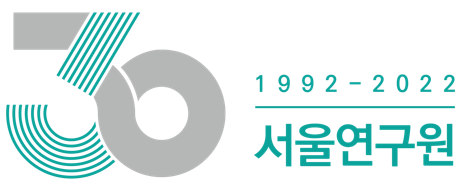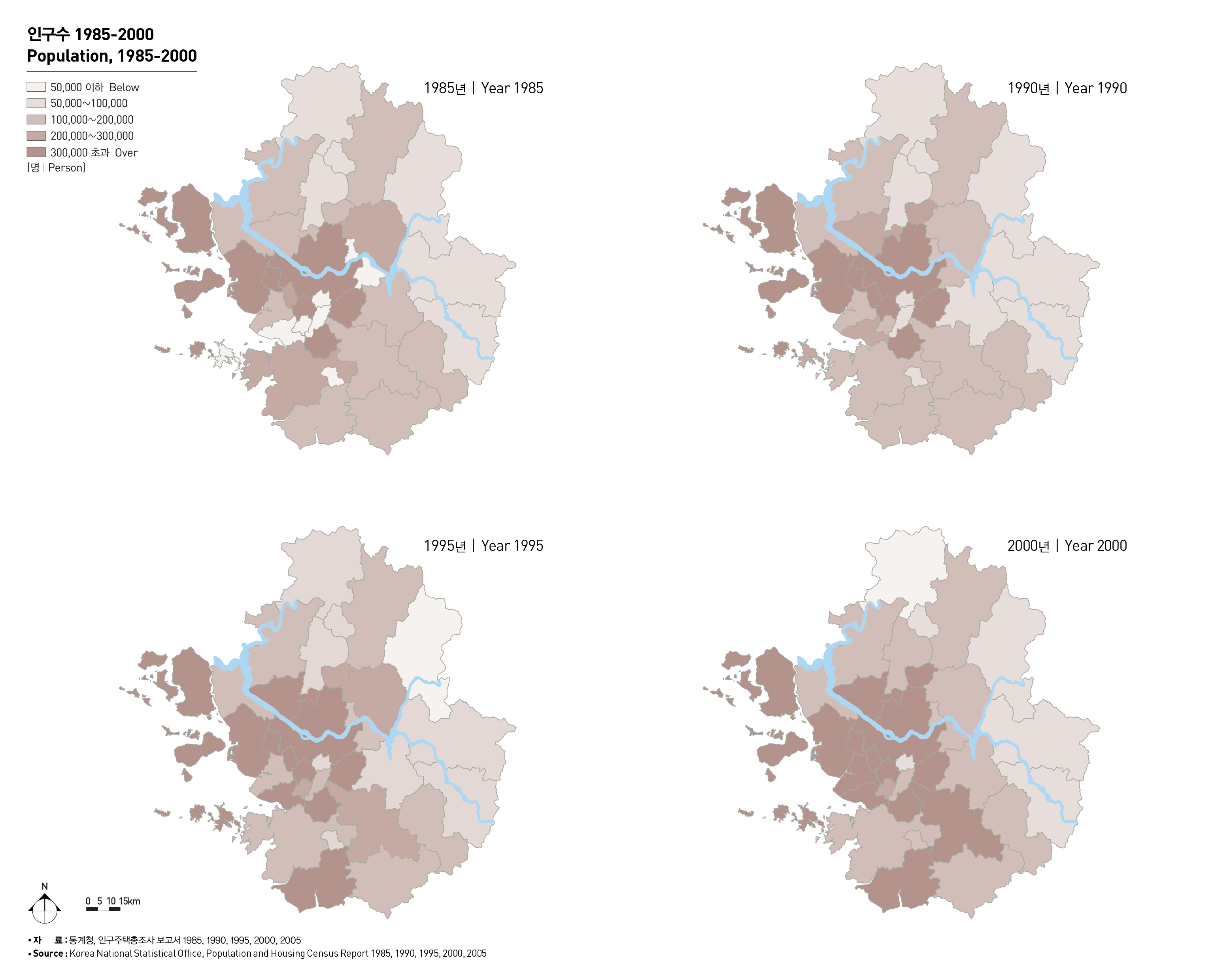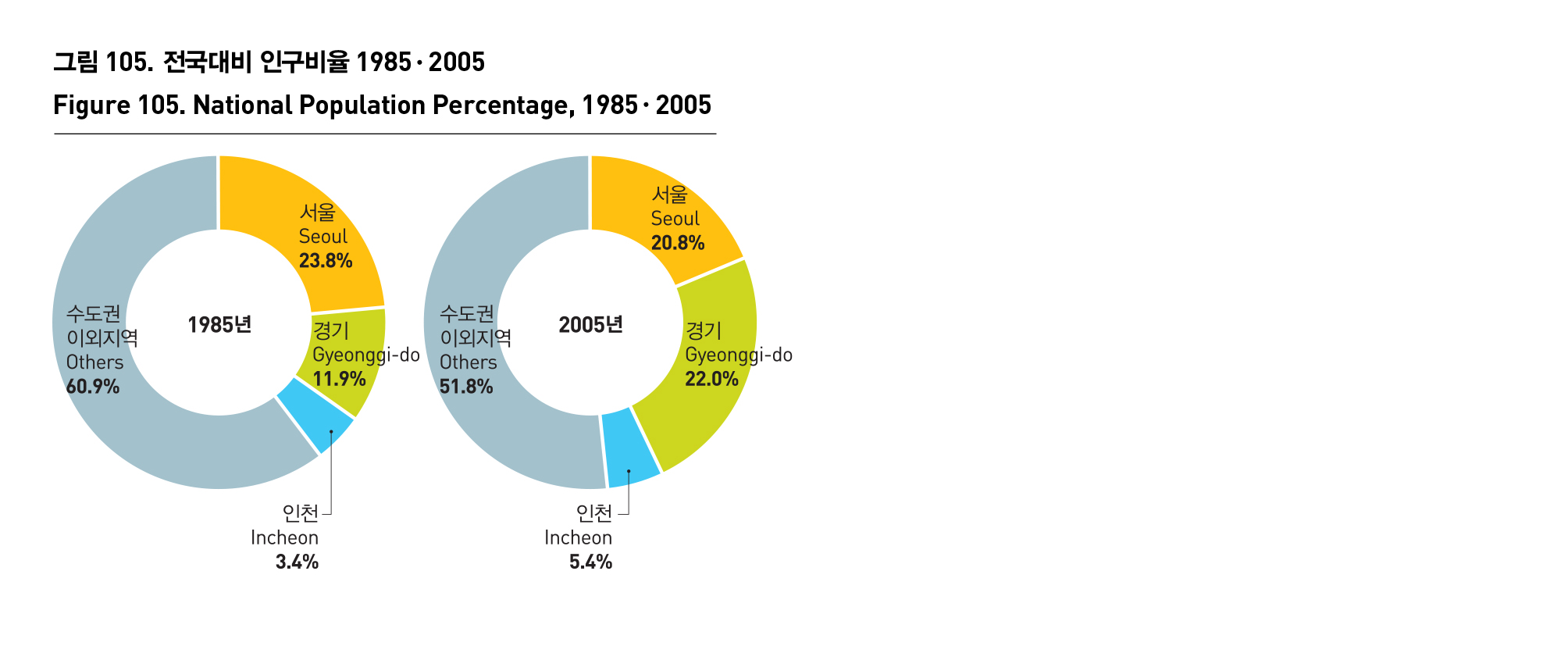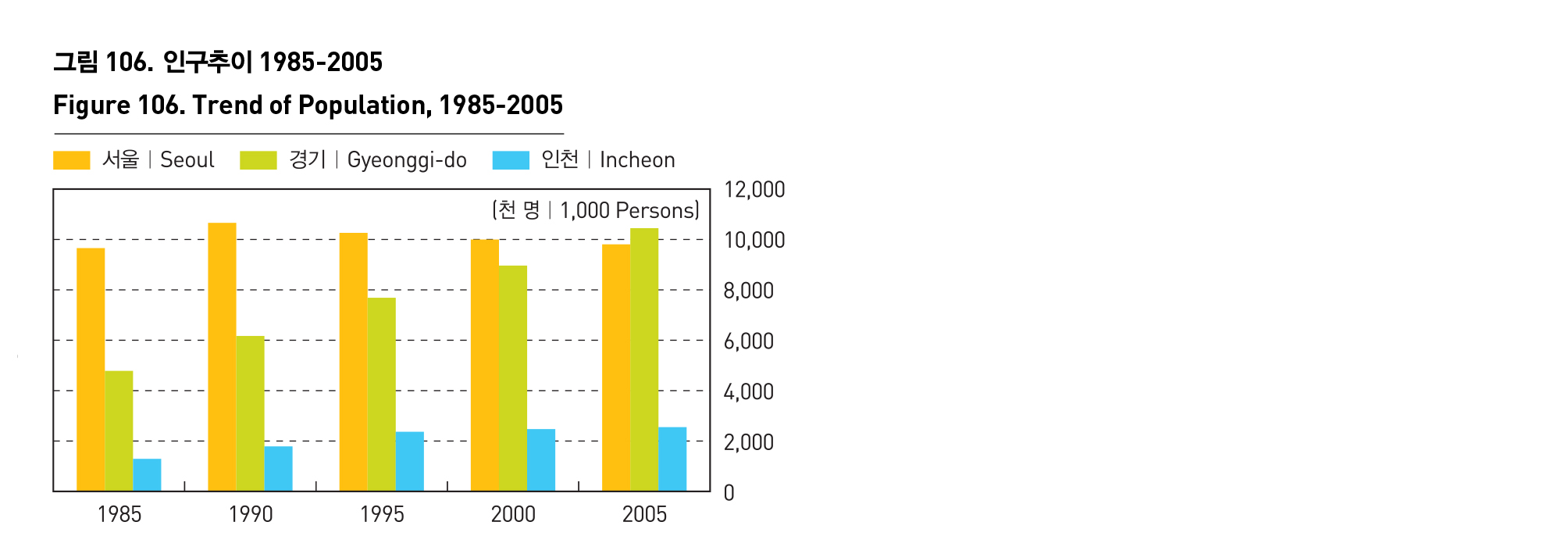-
수도권
인구
-
인구
2005년 수도권 지역의 인구는 22,621천명으로 전국 인구의 48.1%를 차지하고 있으며 1960년대 이래 지속적으로 증가하고 있다. 특히 서울의 인구는 1990년을 기점으로 감소국면에 들어선 반면, 수도권 지역의 인구는 지속적으로 증가하고 있어 서울의 교외화현상이 서울시 행정구역을 넘어수도권으로 확대됨을 알 수 있다.
1980년대 이래 수도권의 인구성장패턴을 보면 대개 경인축(인천,부천 방면)과 경부축(과천, 안양, 수원, 성남, 용인 방면)을 중심으로 서울 중심지에서 반경 30㎞ 권내의 경기 서남부지역에서 인구성장이 높았다. 그러나 1990년 이후에는 고양, 성남 등의 신도시 개발과 용인, 남양주, 광주, 김포 등 준농림지역 개발로 수도권이 광역화됨을 뚜렷하게 볼 수 있고, 2000년대 들어서는 화성, 평택까지 광역화현상이 확대되고 있다.
POPULATION
The number of population in the metropolitan area stood at 22,621,000 in 2005, accounting for about 48.1% of the national population, and the number has continued to be on the rise since 1960s. While Seoul’s population began to shrink after reaching its peak in 1990, the population of the metropolitan area continued to increase. This indicates that Seoul's suburbanization spreads into the metropolitan area beyond the district of Seoul.
The population growth pattern in the metropolitan area since 1980s shows that there was high population growth within a 30-mile radius of the central Seoul in the southwestern part of Gyeonggi-do, centering on Seoul-Incheon axis (Incheon and Bucheon direction) and Seoul-Pusan axis(Gwacheon, Anyang, Suwon, Seongnam and Yongin). The range of the metropolitan area has been widened thanks to development of new towns in Goyang and Seongnam since 1990, and the development of semi-agricultural regions in Yongin, Namyangju, Gwangju, and Kimpo. Hwaseong and Pyeongtaek have also seen the spreading of the metropolitan area in 2000s.
출처 : 통계청, 인구주택총조사 보고서 1985, 1990, 1995, 2000, 2005




